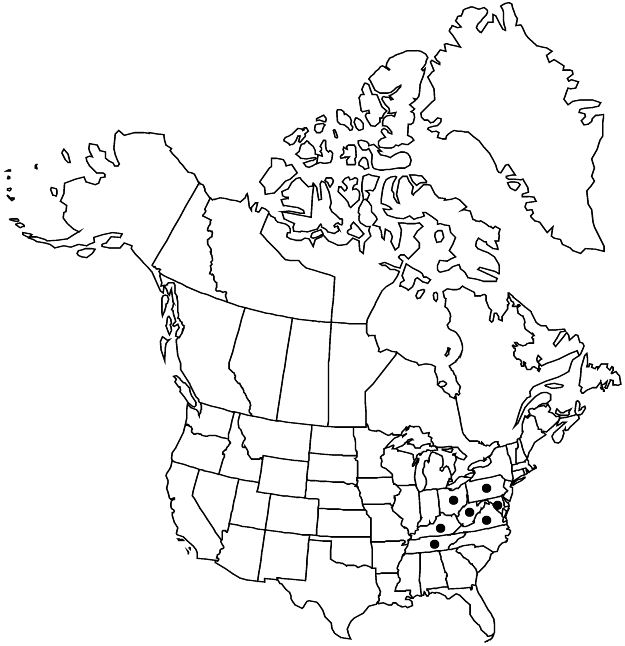Difference between revisions of "Euphorbia falcata"
Sp. Pl. 1: 456. 1753.
FNA>Volume Importer |
imported>Volume Importer |
||
| (3 intermediate revisions by 2 users not shown) | |||
| Line 16: | Line 16: | ||
|name=Tithymalus falcatus | |name=Tithymalus falcatus | ||
|authority=(Linnaeus) Klotzsch & Garcke | |authority=(Linnaeus) Klotzsch & Garcke | ||
| + | |rank=species | ||
}} | }} | ||
|hierarchy=Euphorbiaceae;Euphorbia;Euphorbia subg. Esula;Euphorbia falcata | |hierarchy=Euphorbiaceae;Euphorbia;Euphorbia subg. Esula;Euphorbia falcata | ||
| Line 31: | Line 32: | ||
|elevation=0–1600 m. | |elevation=0–1600 m. | ||
|distribution=Ky.;Md.;Ohio;Pa.;Tenn.;Va.;W.Va.;s;c Europe;w;c;s Asia;n Africa;introduced also in South America (Chile). | |distribution=Ky.;Md.;Ohio;Pa.;Tenn.;Va.;W.Va.;s;c Europe;w;c;s Asia;n Africa;introduced also in South America (Chile). | ||
| + | |introduced=true | ||
|tables= | |tables= | ||
|references= | |references= | ||
| Line 39: | Line 41: | ||
-->{{#Taxon: | -->{{#Taxon: | ||
name=Euphorbia falcata | name=Euphorbia falcata | ||
| − | |||
|authority=Linnaeus | |authority=Linnaeus | ||
|rank=species | |rank=species | ||
| Line 55: | Line 56: | ||
|publication year=1753 | |publication year=1753 | ||
|special status=Introduced | |special status=Introduced | ||
| − | |source xml=https:// | + | |source xml=https://bitbucket.org/aafc-mbb/fna-data-curation/src/2e0870ddd59836b60bcf96646a41e87ea5a5943a/coarse_grained_fna_xml/V12/V12_869.xml |
|genus=Euphorbia | |genus=Euphorbia | ||
|subgenus=Euphorbia subg. Esula | |subgenus=Euphorbia subg. Esula | ||
Latest revision as of 20:18, 5 November 2020
Herbs, annual, with taproot. Stems erect, unbranched or branched, 5–20 cm, glabrous. Leaves: petiole absent; blade obovate, linear-oblong, or spatulate, 2–20 × 2–10 mm, base cuneate or attenuate, margins entire, apex acute, obtuse, emarginate, or mucronate, surfaces glabrous; venation usually inconspicuous, sometimes 3-nerved from base, midvein prominent. Cyathial arrangement: terminal pleiochasial branches 2–5, each 2–6 times 2-branched; pleiochasial bracts similar in shape to but usually shorter and wider than distal leaves; dichasial bracts distinct, widely ovate, rhombic, or suborbiculate, imbricate, base cordate, truncate or cuneate, margins finely denticulate, apex acute or obtuse, strongly mucronate; axillary cymose branches 0–10. Cyathia: peduncle 0–2 mm. Involucre cupulate, 0.5–1.2 × 0.6–1.3 mm, glabrous; glands 4, elliptic to orbiculate, 0.2–0.3 × 0.3–0.8 mm; horns usually absent, occasionally divergent, 0.5–1.2 mm. Staminate flowers 6–10. Pistillate flowers: ovary pilose only at base, styles 0.9–1.1 mm, 2-fid. Capsules subovoid, 2–3 × 1.8–3 mm, slightly lobed; cocci rounded, smooth, glabrous or slightly pilose along abaxial region; columella 1.1–1.8 mm. Seeds grayish, whitish, or light brownish, ovoid, 1.2–1.8 × 0.7–1.1 mm, transversally sulcate; caruncle subglobose to subconic, 0.2–0.5 × 0.2–0.5 mm.
Phenology: Flowering and fruiting spring–summer.
Habitat: Waste places, roadsides.
Elevation: 0–1600 m.
Distribution

Introduced; Ky., Md., Ohio, Pa., Tenn., Va., W.Va., s, c Europe, w, c, s Asia, n Africa, introduced also in South America (Chile).
Discussion
Selected References
None.